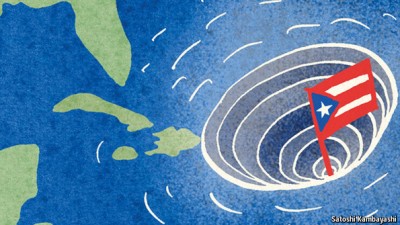Puerto Rican Plan to Make Workers Pay for the Island’s Debt Crisis

The fallout continues in Puerto Rico’s debt crisis following the June 29 announcement by Governor Alejandro García Padilla that the US commonwealth’s $73 billion debt is “not payable.”
Puerto Rico’s non-voting member of the US House of Representatives, Pedro Pierluisi of the pro-statehood New Progressive Party, is sponsoring a bill to grant Puerto Rico bankruptcy protection while it negotiates with its creditors and restructures its economy. The bill envisions a bankruptcy process for the island similar to that imposed on the city of Detroit in 2013.
The House Judiciary Committee has sidelined Pierluisi’s bill. A statement issued jointly by the chairman of the committee, Bob Goodlate, and committee member Tom Marino, both Republicans, declared the general consensus on the committee to be that providing “Puerto Rico’s municipalities access to Chapter 9 of the Bankruptcy Code would not by itself solve Puerto Rico’s problems, which are associated with underlying structural problems.”
Filing for bankruptcy would put creditors—Wall Street hedge funds, mutual funds and wealthy speculators—at the head of the repayment line at the expense of pensions, social programs and infrastructure investments. Government-owned assets could be auctioned off and utilities privatized. However, it would also likely entail losses for Wall Street firms that have invested in the island’s bonds.
Puerto Rico’s Government Development Bank (GDB) announced last week that it would begin efforts to refinance the debt in private negotiations with selected, unnamed bond holders. According to the GDB announcement, the bank will offer a mix of cash and securities in return for a modification of bond terms and interest rate reductions. The current yield on GDB bonds hovers around 15 percent, double the rate for Puerto Rico’s general obligation bonds and equal to the yields for the failing public electric utility, PREPA.
The aim of the negotiations is to reduce the heavy interest rate burden that Puerto Rico, its municipalities, pension funds and public agencies bear. According to the International Business Times, an online journal:
“The island is trying to lower its interest rates after years of borrowing under restrictive terms. For example, a $3.5 billion bond issue in 2014 will require the island to pay $4.22 billion in interest payments alone over the next 20 years, and it won’t begin to pay down the principal until 2021.”
On Monday, to launch the negotiations with creditors, GDB President Melba Acosta made a presentation to bond holders at Citigroup’s auditorium in New York City. Also giving presentations on behalf of the GDB were Anne Krueger and Andrew Wolfe, who co-authored a paper entitled “Puerto Rico—A way forward.” Krueger is a former official with the International Monetary Fund.
The paper proposes a series of “pro-growth supply-side” measures to lower the cost of doing business in Puerto Rico, including elimination of the federal minimum wage for Puerto Rico, tightening of welfare eligibility, gutting of job-protection regulations, and “relaxation” of labor laws for youth and new entrants into the jobs market.
Noting that the US minimum wage of $7.25 accounts for 77 percent of average per capita income in Puerto Rico (compared to 28 percent on the US mainland), the report calls it a “binding constraint on employment.” The report identifies other “binding constraints” such as holidays, paid vacations and local rules that make it harder to dismiss workers than on the mainland.
The report demands “up front action and new institutional mechanisms such as a fiscal oversight board,” code words for an unelected authority, dominated by the banks and hedge funds, that will dictate government policy on the island.
In return for renegotiation of the outstanding debt, the Puerto Rican government is to impose sweeping cuts in wages, medical care, welfare benefits and education, coupled with an increased tax burden on working people. The plan also calls for “introducing competition,” i.e., privatization, of the electricity system.
Puerto Rico has had more than a decade of consistent trade surpluses with the rest of the world, exporting pharmaceutical products, medical equipment, computers, military equipment, and agricultural and fishing products, generating substantial profits for foreign corporations. Profits repatriated back to the US, $35 billion annually, are taxed by Puerto Rico at the low rate of 4 percent.
This essentially colonial relationship between the US and its former colony will continue under the plan being advanced by the GDB and the García Padilla government, but on the basis of a brutal lowering of Puerto Rican workers’ already depressed living standards.

